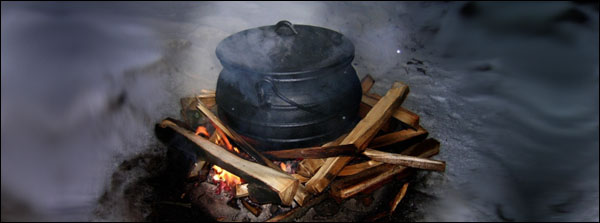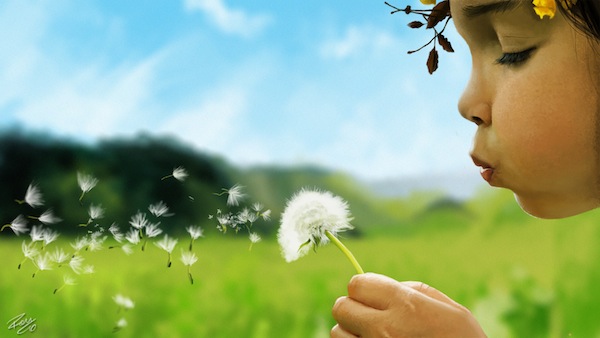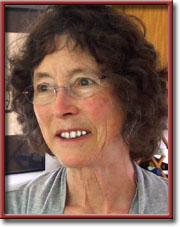A Weedy Taxonomy

“I want to know which weeds are edible, just in case there is an earthquake and my neighbors and I are reduced to scrounging for food in the yards of the houses we used to live in before they became mere piles of useless rubble.”—Anita Sullivan
The Highest Cauldron
By Anita Sullivan

 EUGENE Oregon—(Weekly Hubris)—4/7/2014—Every spring, I am confronted with one of my most annoying weaknesses: I never can remember the names of common plants, especially the weeds. Birds are no problem. I can identify a bird half hidden in the leaves, simply by size, shape, how much it moves, and the way it moves—I don’t even have to see what color it is any more.
EUGENE Oregon—(Weekly Hubris)—4/7/2014—Every spring, I am confronted with one of my most annoying weaknesses: I never can remember the names of common plants, especially the weeds. Birds are no problem. I can identify a bird half hidden in the leaves, simply by size, shape, how much it moves, and the way it moves—I don’t even have to see what color it is any more.
It took years of practice to develop these instincts, but I hardly noticed; I was having so much fun.
But now I earnestly want to do the same with the familiar plants that are sprouting and blooming all around my feet everywhere I go: otherwise known as “weeds.” I want to know which weeds are edible, just in case there is an earthquake and my neighbors and I are reduced to scrounging for food in the yards of the houses we used to live in before they became mere piles of useless rubble.
Besides, why don’t we know the names of the hundreds of common plants that appear in meadows, in woods, and in yards all over town every spring, sending up delicate, miniscule flowers on the ends of long spindly stems, sending out thousands of tiny leaves that might give us essential vitamins if we had sense enough to pick them and put them into soups or salads? When did we stop considering this to be basic and essential information—so basic that it could be passed along through the “child grapevine,” that is, from child to child, without the intervention of parents?
So, on a warm sunny day in early March I headed into the woods with some trepidation: what will my percentage be this year? All the notes I made last year in the margins of my plant guides, the careful drawings of leaves—will I have forgotten most of it during the winter, again? Instead of looking up into the trees and into the bushes as I did for so many years, searching for birds, now my focus is much closer, and lower down. I peer at tiny leaves: how many lobes? Are they toothed, shiny, do they have hairs on the back, are they involute or not? What family does each plant belong to, and what does that family like to do on warm spring evenings?
It’s like wading into a swamp. “Too late!” says the voice in my head. “You can’t even tell dandelion from cat’s ear from chicory in your own backyard. Aiee! the mints and the mustards and the mallows are myriad. Everywhere I look there is a familiar plant whose name I have been told many times, but I can’t figure out a way to make the name stick in my head. Arghh!
Then as I was coming back down the path from the summit of the trail I had a subversive thought. Maybe the problem is not the names themselves—the problem is that somebody else made up these names. I was looking at Northern Bedstraw as I had this thought. It’s that spindly vine with skinny little leaves sticking out on all sides, and it sticks to you when you wander off the path into the woods. It’s a very opportunistic weed, but really kind of pathetic, thinking it can hitch a ride on your jeans and start a new life somewhere else. That’s its own uniquely crafted survival tactic; every plant has one.
But at that particular moment, while I could remember its personality, quirks and habits, I could not call up its name. So, I decided to make one up. Why not? If you make up your own name for a weed you’re actually familiar with, then you’re likely to think of the weed and the name as a single unit. Later, if you can substitute the real name for the one you made up, you’ll still have the whole unit. That’s the secret to remembering plant names.
I had probably just re-invented one of the many mnemonic methods taught by Giordano Bruno and other genius heretics in the 16th century, when people still memorized large chunks of text for a variety of reasons.
So, I called the first forgotten plant “The Running Footman.” By the end of my hike I had named a couple of others too: “Grandmother Looks Out Three Windows,” and “Drying Long Fingernails.” Naturally, I didn’t want to get carried away with my new technique, because then I would have simply introduced an entire new set of Forgotten Names into the world on top of the old ones.
I still have no idea what the real names are of the last two on my short list, but inside my head is a kind of composite “picture” of each one, that includes how the plant “feels” to me, and how its “name” perfectly captures that feeling. What I hope is that when I do actually, firmly, and securely identify each of these plants by its “real name” then, every time I see the plant, the name I made up will quietly become like the “key” that allows me always to unlock that word.
Only about a thousand more weeds to go, and I’ll be ready for the earthquake.
4 Comments
Will
Wonderful, Anita. We all must be tempted to do something like this, especially when confronted with a perfectly familiar plant whose “given” name just won’t come. Actually, I’m tempted to use this method when I fail to remember correctly – as happens occasionally these days – the given names of family members.
This “vernacular taxonomy” must be the source of all those exquisitely descriptive old names for the plants of the field and the woods…how wonderful to make them one’s own!
Anita Sullivan
Thanks, Will. I can’t help but chuckle at the idea of using this method on family members — can’t you just imagine accidentally blurting out “Hi, Pointy-Head!” at a family gathering!
diana
Love it, Anita. I suffer from the same problem. What a great idea though I doubt it will resonate with my garden society friends who spout out long latin names for just about everything and even know when that name has been changed for something more correct. But I do admire your familiarity with birds. I was in Mississippi last month and just gloried in all the feathered creatures filling my ears with coloraturas and my eyes with flashes of crimson and blue never seen in our Greek gardens.
Anita Sullivan
Actually, my bird skills mainly apply to the small woodland birds around my house. When I go out on the seashore (or to Mississippi) I’m like you, just “glorying in all the featured creatures,” and comfortable in not knowing the names we gave them!